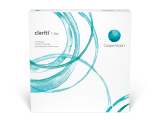
Today, there are many ways that a practice can communicate with patients. Appointment reminders, birthday wishes, store promotions and holidays are some of the more common types of communications. Another way to communicate with patients is with patient communication software. But why does this matter? Research has shown that consumers are becoming accustomed to more thoughtful and engaging communications from their medical professionals. More interaction and engagement leads to more loyalty from your patients.
Another benefit to communication software is having the ability to follow up an appointment with a survey – it is important to learn your customers’ perception of your practice so you can continually improve your performance. Furthermore, it is important to be aware of any negativity surrounding your practice because one unhappy voice seems louder that twenty happy ones; especially with the recent rise of social media outlets.
Using patient communication software can save time for your staff and the save you money in the long run. Automated reminders lead to fewer missed appointments and less staff time spent on the follow up.
Do these features make it sound like patient communication software is right for your office? Here are some things to look for when researching a system. First, you will want to make sure that the system is competitively priced and that it will interface with your existing office management software. Additional features you may look for include:
-
- Scheduling and email reminders
- Mobile capabilities
- Links to your social media
- Dashboard to keep organized
- Newsletter capabilities
- Thank you notes and surveys
Ultimately, you will want the system to be easy to use and have good customer support. Patient communication software will automate your customer service and office processes saving you time. When used effectively, it will also help you retain and keep engaged with your patients.





